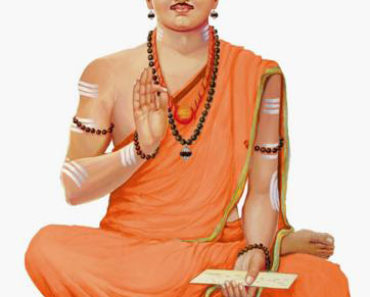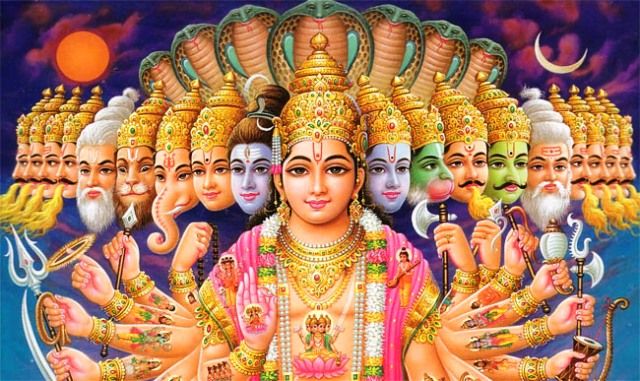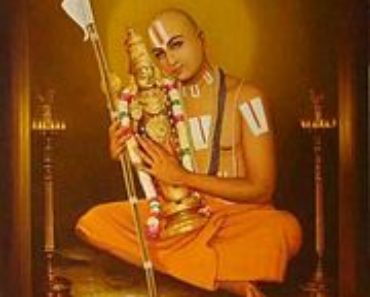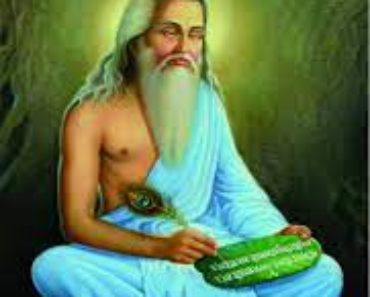Table of Contents
Introduction
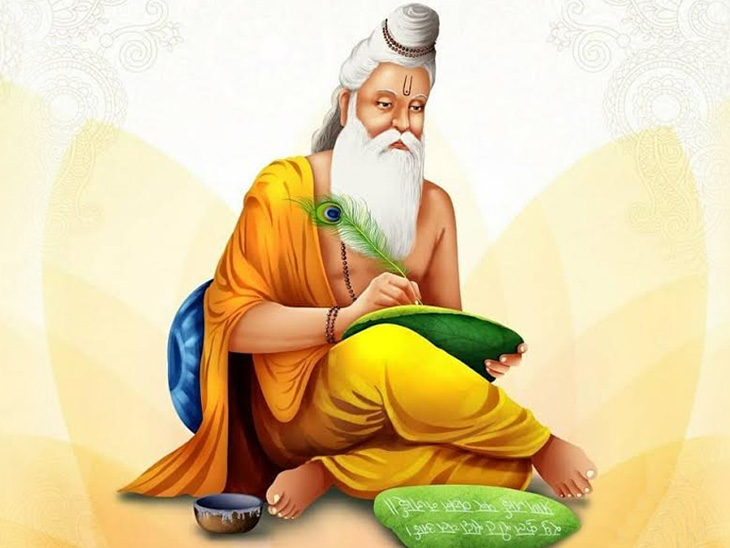
Valmiki (/Valmiki/; Sanskrit: Vlmki [lmiki]) is revered as the harbinger-poet in Sanskrit literature. He has written the epic Ramayana, dated as early as the 5th century BCE and as late as the first century BCE. He is regarded as the first poet and the author of the Ramayana, the first epic poetry. Valmiki wrote the Ramayana, a Hindu epic containing 24,000 shlokas and seven cantos (kaas). The Ramayana contains around 480,002 words. Nearly a fifth of the length of the Mahabharata’s whole text or about four times the length of the Iliad. The Ramayana is a Hindu epic that chronicles the story of Rama, a prince from the city of Ayodhya in the Kingdom of Kosala, whose wife Sita is kidnapped by Ravana, Lanka’s demon king (Asura). Valmiki’s Ramayana is assumed to have been composed around the same period as the Mahabharata, between 500 and 100 BCE. It has undergone interpolations and redactions like many old epics, making it impossible to date precisely.
According to British comic Aubrey Menen, Valmiki was “recognized as a literary talent” and hence was labeled an “outlaw” as part of an “Indian Enlightenment” period because of his “philosophic skepticism.” Valmiki is also claimed to have lived during Rama’s lifetime. According to Menen, Valmiki is “the first author in all history to immerse himself into his work.” Valmiki was born Agni Sharma to Pracheta, a Bhrigu gotra Brahmin (Sumali). According to legend, he once met the famed sage Narada and addressed his obligations. Narada’s words motivated Agni Sharma, who began to perform penance by uttering “Mara,” which signifies “death.” After numerous years of penance, the word became “Rama,” the name of the god Vishnu. Agni Sharma earned the moniker Valmiki because of the massive anthills around him. Agni Sharma was called Valmiki and became one of the most revered ascetics after learning the scriptures from Narada.
According to folklore, Valmiki is also said to have been a thief before becoming a rishi. Valmiki was born a Brahmin named Lohajangha and was a loving son to his parents, according to the Nagara Khanda of the Skanda Purana’s section on the construction of Mukhara Tirtha. He had a wonderful wife, and the two of them were completely dedicated to one another. Lohajangha began robbing everyone he came across in the forest to feed his hungry family for twelve years when there was no rain in the Anarta region. He met the Saptarishi, or seven sages, during this life and sought to loot them.
On the other hand, the learned sages pity him and show him the mistake of his ways. One of them, Pulaha, gave him a Mantra to concentrate on, and the Brahmin turned criminal became so engrossed in chanting it that he lost track of time anthills grew around his body. “Since you obtained enormous Siddhi seated within a Valmka (an anthill), you will become well-known in the world as Vlmki,” the sages declared when they returned and heard the sound of the mantra coming from the anthill.
During the birth of Lord Rama, the sun was in Aries, Saturn was in Libra, Jupiter and the moon were in Cancer, Venus was in Pisces, and Mars was in Capricorn, according to Sage Valmiki’s epic Ramayana. It was also the ninth day of the lunar month of Chaitra’s rising moon phase. According to Pushkar Bhatnagar’s book “Dating the Era of Lord Rama,” these rare astral conditions were present in the sky on January 10, 5114 BC. Pushkar Bhatnagar, an engineer and Indian Revenue Service official, has acquired a unique Planetarium program from the United States. He entered the required facts from Maharishi Valmiki’s planetary placements. He produced highly fascinating and persuasive results, which established significant dates from Sri Ram’s birth through his return to Ayodhya after 14 years of exile. Valmiki’s astronomical observations were fed into the software. The results showed that the planets and stars were exactly where they should have been at noon on January 10, 5114 BC.
In the Ramayana, Maharishi (Sage) Valmiki told the account of Sri Ram’s life for the first time. Valmiki was a superb astronomer, as evidenced by his use of sequential astronomical references on significant days in Sri Ram’s life, denoting the location of planets concerning zodiac constellations and other stars (nakshatras). Lord Sri Ram was born on January 10, 5114 BC, resulting from this (7123 years back). It was the ninth day of the Shukla Paksha in Chaitra month, according to the Indian calendar. According to the Ayodhya Kanda of the Valmiki Ramayana, King Dashrath wished to make Sri Ram the ruler since the Sun, Mars, and Rahu surrounded his nakshatra, and the king generally dies or becomes a victim of plots under such a planetary configuration.
Teachings of Valmiki
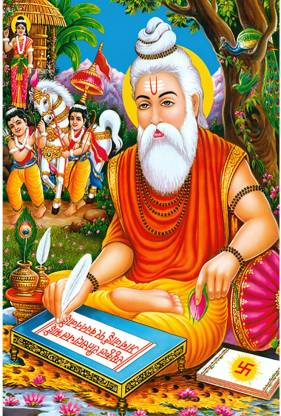
At the Ganges River, Valmiki was performing his daily ablutions. A disciple named Bharadwaja was carrying his belongings. On their voyage, they came across the Tamasa Stream. As he gazed at the stream, Valmiki exclaimed to his disciple, “Take a look at how clear this water is, much like a good man’s mind! I’m going to take a bath here today.” While looking for a suitable spot to step into the stream, he saw a crane couple mating. Valmiki was delighted to observe the chirping birds. After being struck by an arrow, the male bird died quickly. Its lover was overtaken with despair and cried in agony before succumbing to shock. This tragic scene made Valmiki’s heart melt. He searched the area for the person who had shot the bird. Nearby, he noticed a hunter with a bow and arrows. Valmiki erupted in rage. He opened his mouth and shouted out, “You will find no rest for the long years of Eternity, For you killed a bird in love and unsuspecting.” This is thought to be the first shloka in Sanskrit literature, as it arose spontaneously from Valmiki’s fury and anguish. Valmiki authored the entire Ramayana in the same meter that the god Brahma had given him as the shloka, with the blessings of the god Brahma. As a result, this shloka is considered the earliest in Hindu literature. Valmiki is one of the first poets of Adi Kavi, and Ramayana is the first kavya (poem).
Final Note

In the epic Ramayana’s concluding chapter, Uttara Kanda, Valmiki had an important role. Valmiki’s Uttara Kanda is not regarded to be his original work. It is believed to have come from the Sesha Ramayana. Sita is reported to have been sent to the bush by Rama. Sita seeks refuge at Sage Valmiki’s ashram, giving birth to twin boys named Lava and Kusha. Lava and Kusha were Valmiki’s first students, to whom he taught the Ramayana. In the epic’s Bala Kanda, Valmiki narrates the Ramayana to his disciple’s Lava and Kusha.
According to the Vishnudharmottara Purana, Valmiki was born in the Treta Yuga as a manifestation of Brahma and penned the Ramayana. People seeking enlightenment should worship Valmiki. Tulsidas was his reincarnation, and he wrote the Ramcharitamanas, an Awadhi-Hindi rendition of the Ramayana. Valmiki is revered as a patron saint by the Balmiki sect of Hinduism, where he is also known as Lal Beg or Bala Shah and has a multitude of mandirs (temples) devoted to him. Tiruvanmiyur, a suburb of Chennai, has gotten its name from Sage Valmiki, Thiru-Valmiki-Our. This location is home to a Valmiki temple that is thought to be around 1300 years old. In Rajanahalli, Karnataka, there is also Shree Valmiki Mata Maha Samsthana. Valmiki (1921), Surendra Narayan Roy’s Ratnakar (1921), Ellis Dungan’s Valmiki (1946), Bhaji Pendharkar’s Valmiki (1946), Sundarrao Nadkarni’s Valmiki (1946), C.S.R. Rao’s Valmiki (starring Rajkumar; 1963), and Valmiki (starring N. T. Rama Rao; 1963), and Arvind Bhatt’s Sant (1991). After a complaint against Oberoi for words deemed derogatory by members of the Valmiki caste in India, Bhatt’s film, which starred Suresh Oberoi in the eponymous character, remains unreleased.
Quotes

Valmiki, the famed author of the Sanskrit epic Ramayana and regarded as the ‘first poet,’ is unknown when he was born. Regardless, according to the Hindu lunar calendar, his birthday is celebrated every year on the full moon, or Purnima, in the month of Ashwin. Between October and November, Ashwin generally appears. On October 31, the ‘Blue Moon’ for Halloween will be seen in the sky. Devotees are given free food, prayers are offered in the form of an aarti, and Shobha yatras are held in honor of Valmiki’s birthday. Temples dedicated to Valmiki are similarly adorned with a rainbow of colors and flowers. The oldest is about 1,300 years old and is found in Chennai. Valmiki has taken a break at this shrine after finishing the Ramayana.
Because of the coronavirus epidemic, most individuals are expected to stay at home and celebrate with their families this year. Here are some of the most famous Valmiki quotes to honor Valmiki Jayanti and the Ramayana.
“There is no deity powerful than time.”
“Overdoing anything leads to sorrow.”
“To be happy always is something which is difficult to achieve. That is to say, happiness and sorrow alternate in one’s life and there cannot be uninterrupted happiness alone.”
“One who is haughty, who does not know whether what he does is right or wrong and who has taken the wrong path is to be disciplined even if he is a guru, parent or an elder in age or learning.”
“Whatever a man does, good or evil, comes back to him someday. And he pays for everything.”
“I want you to remember, always, that no man who sits upon a throne likes to hear another man being praised.”
“A guest, though he be ill mannered, deserves to be welcomed by the discerning.”
“Only the timid and the weak leave things to destiny (daivam) but the strong and the self-confident never bank on destiny or luck (bhagya)
“Without danger knocking on the door of one’s benefactor, where arises the chance to reciprocate?
“It is difficult for the children to repay the debt of what the mother and the father have done to bring them up.”
“Even when you realize that the one before you is an enemy and must be treated sternly, do not hurt with words.”
“In a world where we are accustomed to rivalries over possession, authority, and borders, and people clashing over the issue, ‘Ours’ or ‘Mine, not yours’ it is rather strange to find two people debating whose the kingdom is not, and asserting: ‘Yours, not mine’.”
“Truth controls this world and dharma is rooted in truth.”
“Show no disrespect even when impelled by desire or anger.”
“People are as repelled by a liar as they are of serpents.”
“If a person is gifting away his elephant but his heart is set on the rope used for tying the elephant, of what use is his attachment to the rope when he is giving away the elephant itself.”
“Once Rama gives his word, that is final and it is kept at any cost. There is no question of repetition of the same a second time.”
“You cannot count on the physical proximity of someone you love, all the time. A seed that sprouts at the foot of its parent tree remains stunted until it is transplanted. Rama will be in my care, and he will be quite well. But ultimately, he will leave me too. Every human being, when the time comes, has to depart to seek his fulfillment in his own way.”
“And the high mandate of his sire. Led by the Lord who rules the sky, The Gods and heavenly saints drew nigh, And honoured him with worthy meed, Rejoicing in each glorious deed. His task achieved, his foe removed, He triumphed, by the Gods approved. By grace of Heaven he raised to life The chieftains slain in mortal strife; Then in the magic chariot through The clouds to Nandigráma flew. Met by his faithful brothers there, He loosed his votive coil of hair: Thence fair Ayodhyá’s town he gained, And o’er his father’s kingdom reigned. Disease or famine ne’er oppressed His happy people, richly blest”

